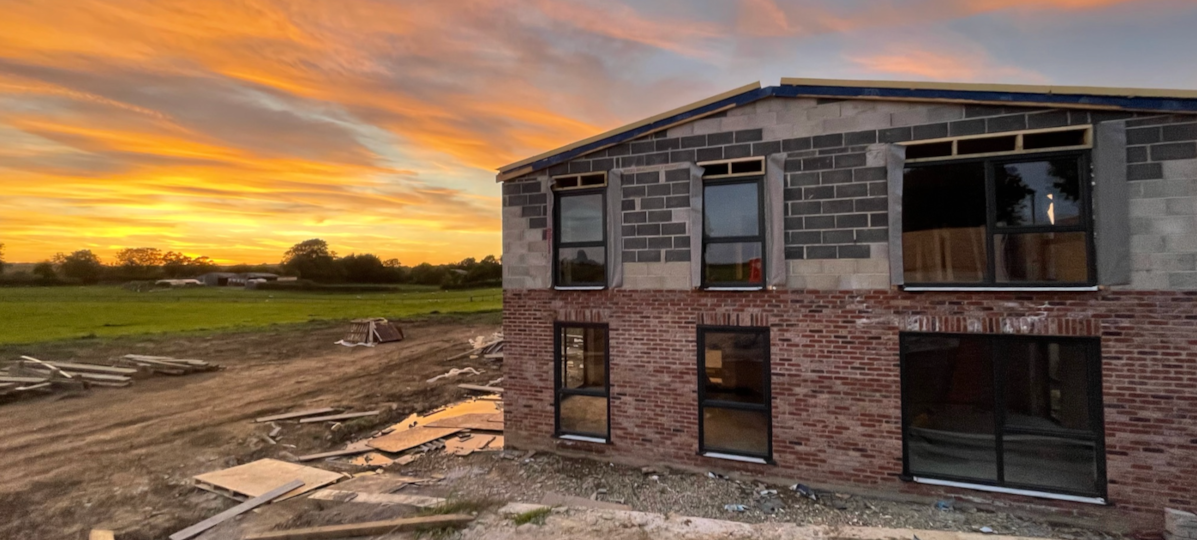NaCSBA member Mayflower Mortgage and Finance works with self builders at the very earliest stage of their project, helping them get the right financial product for their needs. We asked Mayflower to share some insight with anyone considering a self build, by chatting to Victoria and Gareth, a couple part way through their build. We hope you find their answers helpful!
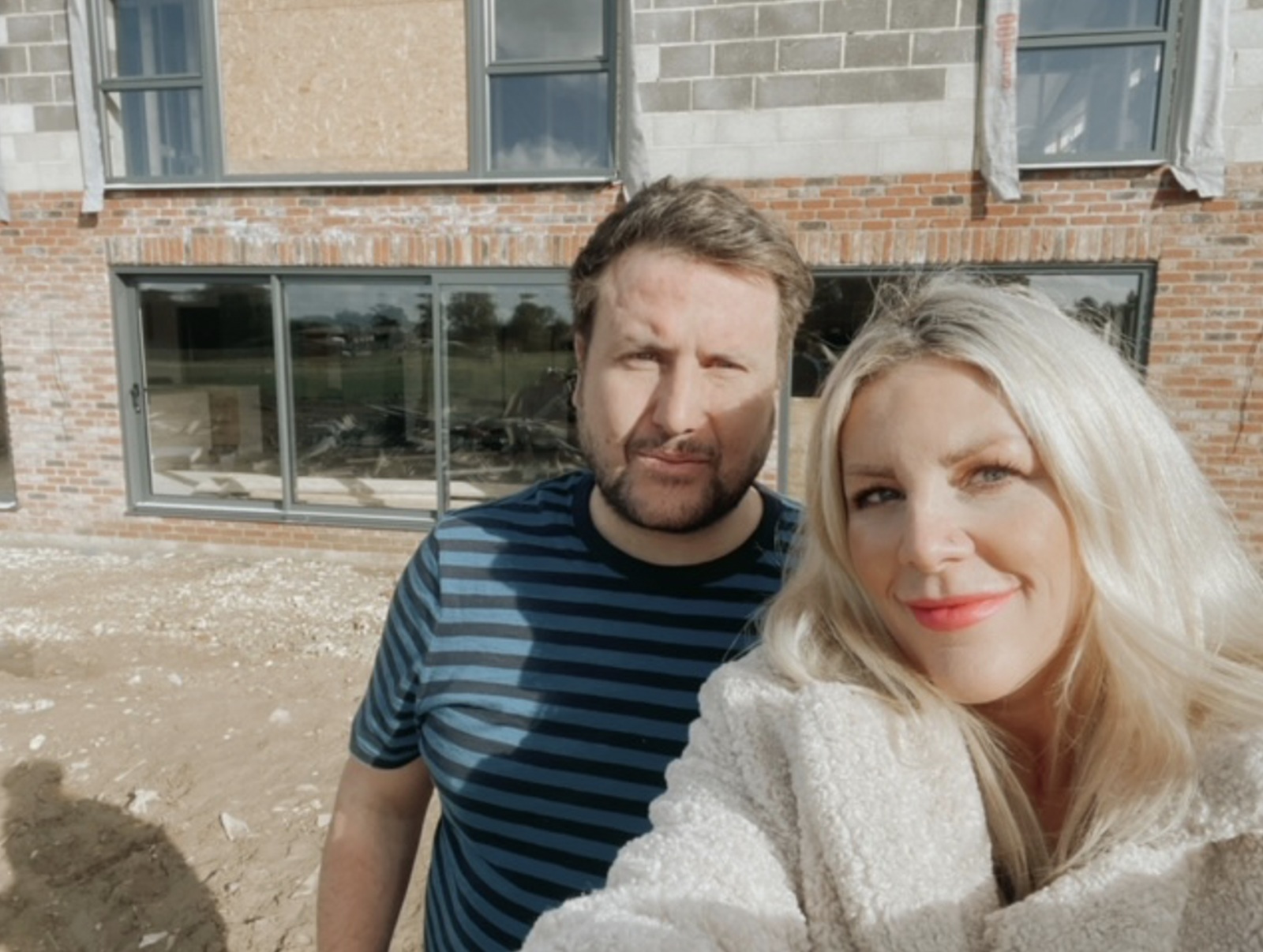
Tell us about your project
Knowing we wanted to self build, we bought the plot with prior approval and existing plans in place.
Once it went through we consulted with a local architect to see if he could rework plans within the existing footprint to include some of the extra features we were hoping to fit in and improve access.
We also looked to amend the specified outer material from grey cladding to a rustic red brick on the bottom half of the building to look more in keeping with the local area.
Thankfully our local council supported the plans and viewed them as an improvement on the previous scheme so we were very lucky to get the layout and look we were hoping for whilst still staying within the constraints of Class Q development rights (see box, below).
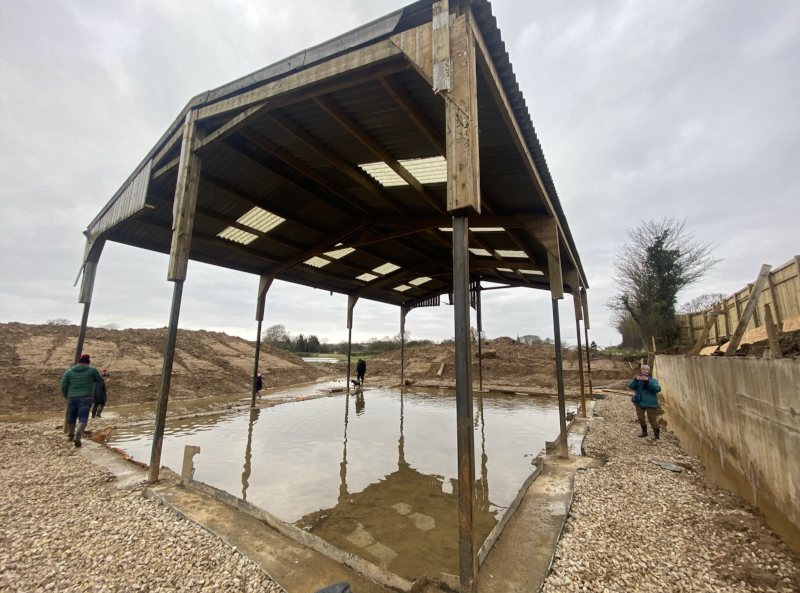
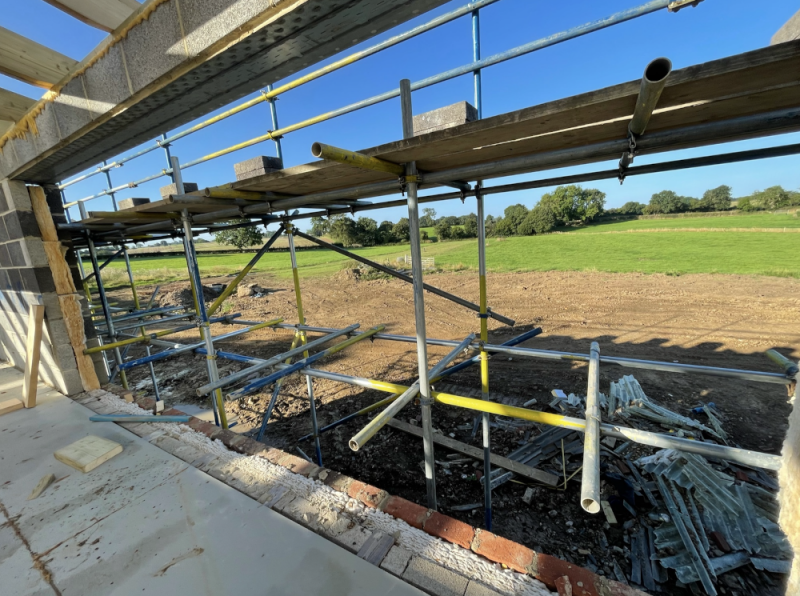
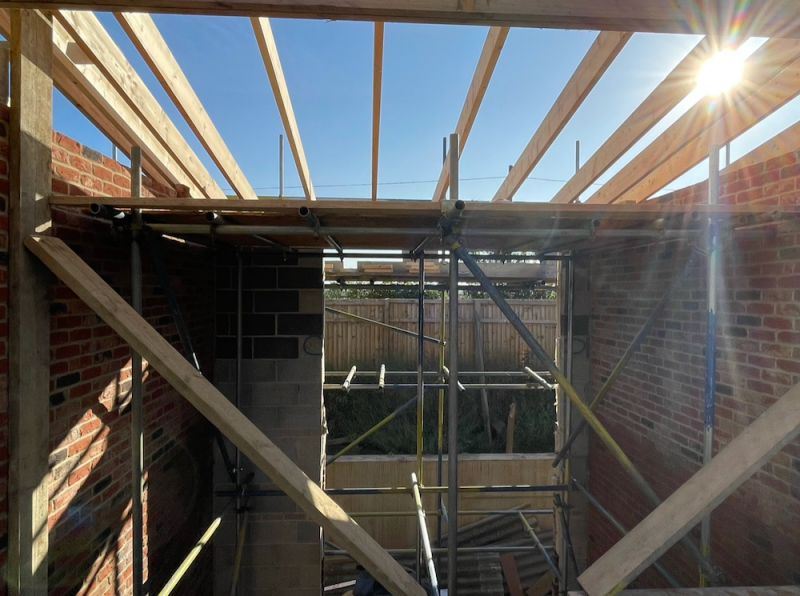
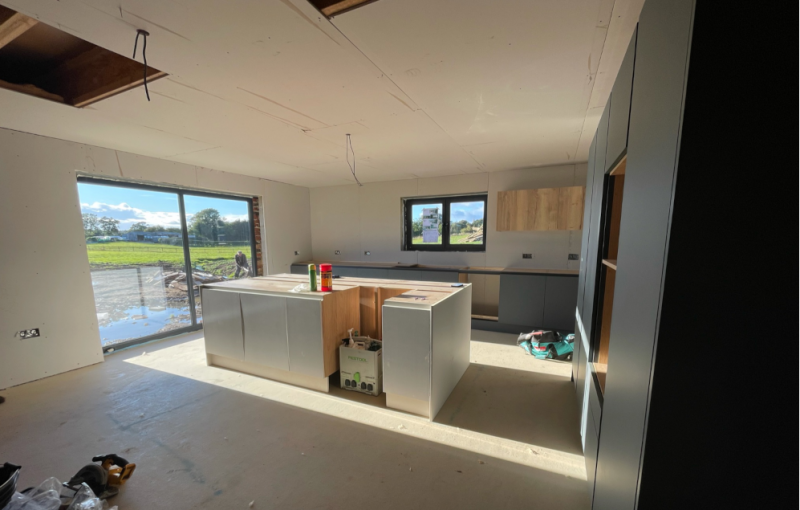
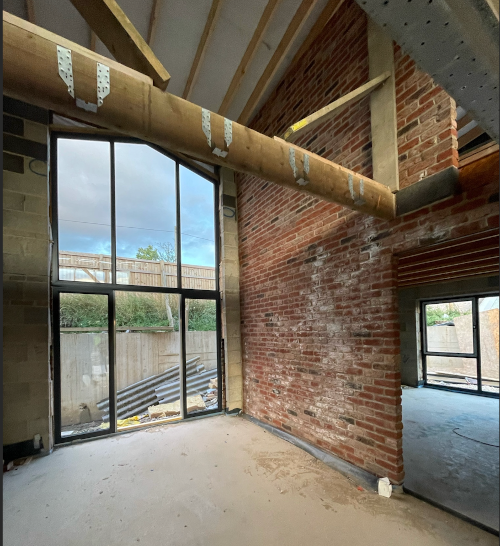
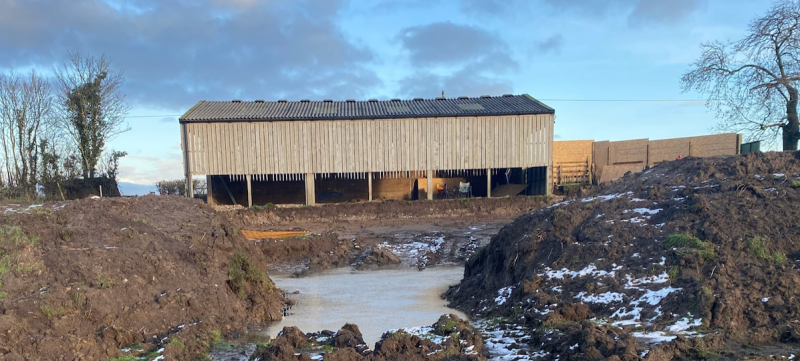
What 5 top tips would you give to any self builder that you wish you had been given?
- Explore new greener technology. Initially our plan was to connect to mains electric but for various reasons this was fraught with uncertainty. We ended up going completely off grid with a full renewable energy system encompassing solar, wind and a ground source heat pump for all of our electric and heating needs.
We’ve been super impressed with how advanced the technology is and used a company that could offer us a complete solution. As well as being green and having no utility bills, we will also benefit from a government grant for the next 5 years that will effectively pay for the heating system. - Go through the fine detail of any quotes with your contractors fully. Back this up with a verbal conversation to ensure all points are understood and always follow up with e-mails to confirm everything. This way you have a paper trail to fall back on if anything goes wrong.
- Always factor in your contingency! Unfortunately, like many other self builders, we’ve been stung by increases in materials costs, so ensure you have resources to fall back on.
We ended up spending extra on details, such as using antique bricks inside to create feature walls in the hallway which added to the budget but we felt would elevate the finish. - Shop around and experiment with materials. For example, we were initially going to use zinc for the roof with quotes of between £20-£65k. But we found a steel alternative that looked identical, which included the insulation charges, for just £7k.
- Be prepared to make compromises. This is very important to enable you to finish the build close to the timescale and budget. We chose to invest in the big ticket, permanent items, such as the kitchen, brick work and renewable energy systems. But we’ve compromised on little things, like using aluminium-look PVC for the windows instead of aluminium, putting the landscaping on hold for now and forgoing the staircase we really wanted, knowing that we can upgrade it in the future.
What advice can you give about engaging with professional services?
Financial Advisor -everyone’s starting point should be sourcing a great financial advisor that specialises in self build. With so many options available you need someone who can help rationalise and build a plan with you.
We used Mike Pawley at Mayflower Mortgages who made everything so simple and hooked us up with a fantastic product that suited our needs perfectly.
An architect is an obvious one, though we only used ours to finesse what was already there, which wasn’t expensive. It’s worth reviewing plans if you buy a home with planning in place, to ensure you get the home that reflects your needs.
Engineering companies – these are essential, and must be consulted as and when needed for any technical drawings and calculations needed for the planners.
Green specialists – if you’re considering going green I’d highly recommend considering a company that can offer you a complete turnkey solution. We used The Big Green Beard who have been excellent.
Were you able to do any work yourselves?
We’re lucky on the project management side, as Gareth’s background is new-build construction (though this is the first time we’ve built on our own). If you haven’t got the knowledge and contacts I’d recommend consulting with a third party that can steer the build and ensure the sequencing of the various jobs is correct.
How long has the process taken?
We broke ground in December 2020 with ground works taking a long time due to the extensive excavations needed. We aim to be in the house with Building control sign off for the end of November 2021, which we are really happy with considering we’ve both been working full time and haven’t had contractors on site full time.
Would you do it again?
Absolutely 1000%! We’ve been living in a caravan nearby, which has been challenging at times, especially in the winter months, but we’ve enjoyed the journey and actually living a simpler life for a bit.
To anyone considering self build, as long as you do your due diligence and the financial side stacks up comfortably we’d say go for it and live your dream. Anything is possible with drive, planning and determination.
What would you change about the build ?
I don’t think there’s anything we’d change about the build itself at this point – perhaps ask us in a year though!
Find out more about Gareth and Victoria’s build on Instagram at @ourbarnconversionstory
What are Class Q development rights?
Permitted development rights (PDR) are a set of rights in England that allow people to do certain things within the law, with planning permission automatically granted as long as the conditions are met for each category. They are set out in the Town and Country Planning (General Permitted Development) (England) Order 2015 (as amended) (GPDO 2015)
Class Q permitted development rights can support the conversion of agricultural buildings into a home (or up to five homes) without the need for full planning application.
This uses a process called ‘prior approval’ instead of needing full planning permission from scratch, as long as certain criteria are met.
You will still need a planning consultant to help you with the process, as the conditions can be many and various, and it is important to get these right to ensure the PDR is valid. This is because the planning authority must still approve the plans before any work commences. The CLA reports that nationally, about 60% Class Q applications fail – often due to local interpretations of the rules. But this means that 40% do allow people to build, so don’t discount it as a route to your home.
Find Self Build Planning specialists in the NaCSBA members directory.
THIS IS A NaCSBA MEMBER UPDATE


